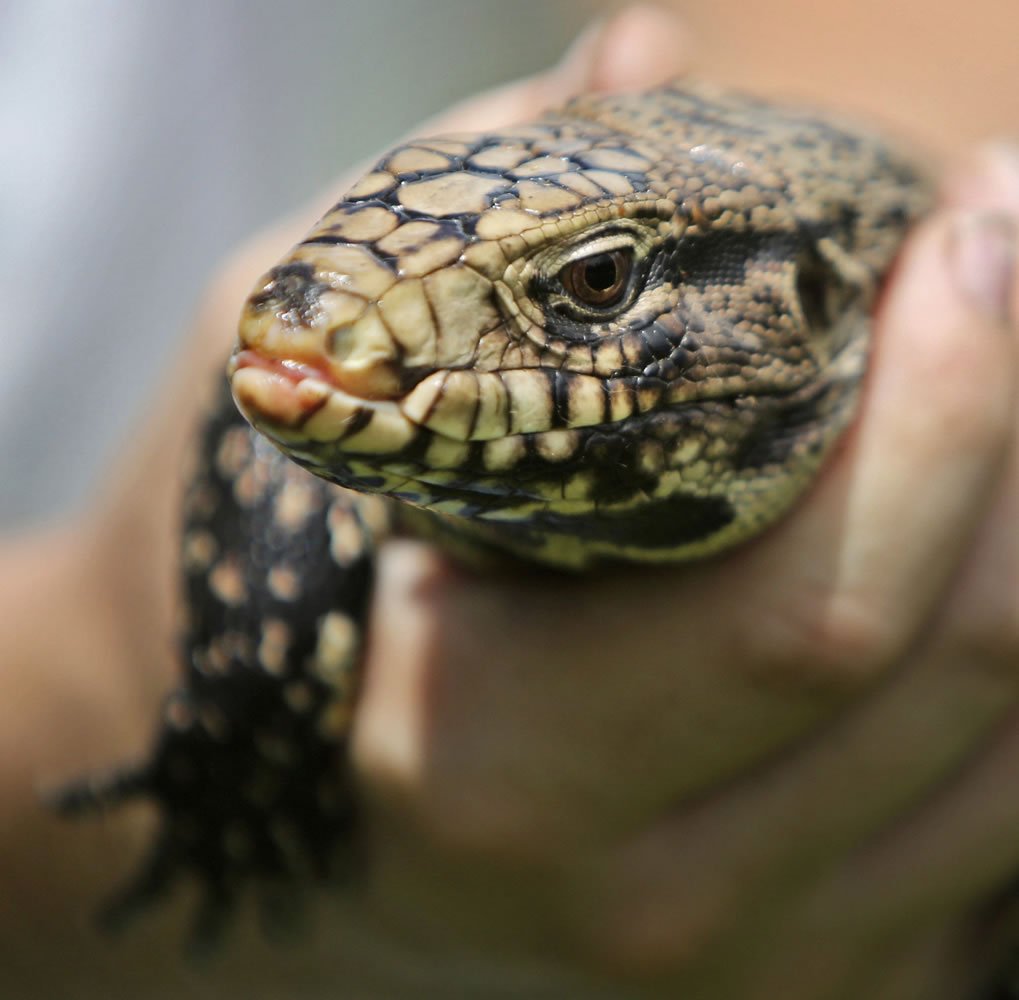MIAMI — The Argentine tegu lizard doesn’t grow nearly as big as a Burmese python, but it may be a greater threat to South Florida’s native animals.
At a maximum size of four feet, a tegu can’t gobble down a full-grown deer or alligator with its rapier-sharp teeth. But the invasive, black and white reptiles have the potential to cause even more ecological damage than the 18-foot snakes that have drawn international media attention in recent years.
And now, scientists say, it’s too late to eradicate them.
“When we first found out about them in 2008, we thought we had a chance to nip this population in the bud,” said the National Park Service’s Tony Pernas, who co-chairs the Everglades Cooperative Invasive Species Management Area group. “Now we’ve changed from eradication mode to containment mode.”
Long a popular staple of the exotic pet trade, the tegus likely were released by irresponsible owners or escaped from captive breeding facilities in south Miami-Dade County. Right now, the escapees’ epicenter is in the Florida City-Homestead area where federal, state and local agencies — with help from private trappers — are trying to round up as many as possible before the animals go into hibernation in October. Another distinct population has cropped up in west-central Florida’s Polk-Hillsborough county area.
The chief worry among scientists and wildlife managers is the tegus fanning out to neighboring Everglades National Park (where a handful have been captured) as well as east to FPL’s Turkey Point nuclear power plant and south to the Crocodile Lake National Wildlife Refuge in north Key Largo.
Containment is urgent, they say, because the lizards will eat just about anything — small mammals, birds, insects, plants, and their all-time favorite — eggs. That means goodbye to the baby American crocodiles that would have hatched in the refuge and the sand berms of the power plant — and recently were downlisted from an endangered to a threatened species. It could also mean lights out for the endangered Key Largo wood rat — not to mention other native creatures.
“They have the potential to impact all kinds of listed species,” said Jenny Eckles, non-native wildlife biologist with the Florida Fish and Wildlife Conservation Commission. “Tegus can go through the water. They’re very adaptable to a number of different habitats, which is why we consider them to be problematic.”
Unlike Burmese pythons, whose numbers were knocked down by the extended cold period in early 2010, tegus thrive in temperatures as low as 35 degrees and as high as South Florida’s steamiest. Eckles and others tracking them say they often find tegus out in the open during the hottest time of day.



